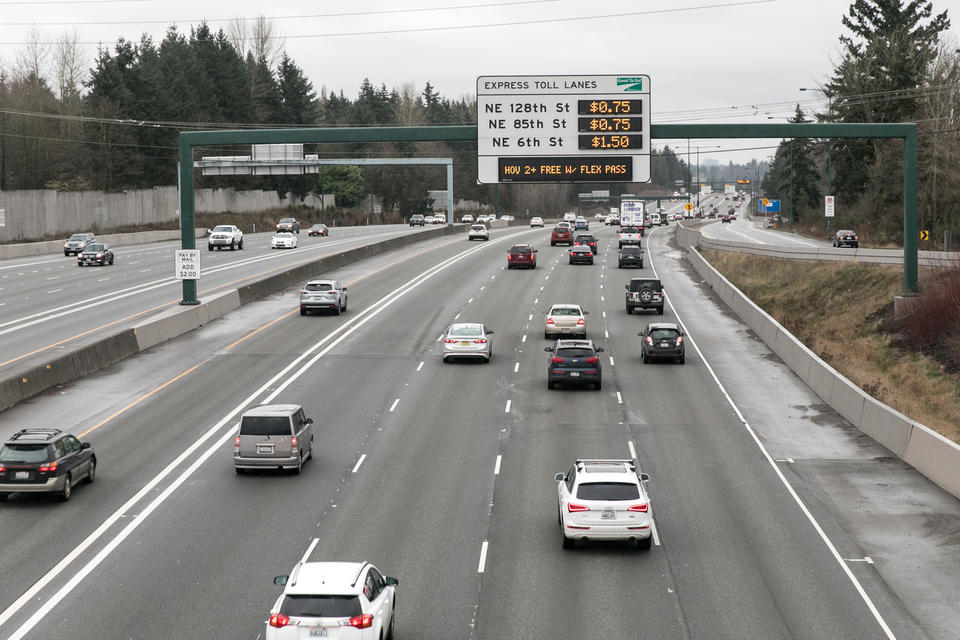The pandemic has created a problem for the Washington State Transportation Department (WSDOT) as much of the toll revenue that WSDOT collects to repay bond debt, has decreased significantly.
While the problem is affecting SR 520 and the Tacoma Narrows bridge, which are facilities that the cost of construction is being repaid with tolls, the biggest impact is to I-405 and SR 167 and the HOT lanes. I-405 and SR 167 have an additional problem that toll pricing is driven by demand and since there is significantly less traffic on the roads, there is insufficient revenue to repay the debt.
The Washington State Transportation Commission (WSTC), which is the group with the responsibility to set toll rates, recently published the latest traffic and revenue numbers. Toll revenue is down 42% ($108.4 million) since March 2020. Tacoma Narrows bridge toll revenue is down much less 16% ($14.2 million) while I-405 saw a 79% ($27 million) reduction in toll revenue which is unsurprising given the double hit of lack of demand and the variable toll rate.
The WSTC is holding an emergency meeting on May 11 to potentially increase tolls to make up for the tax shortfall. If demand continues to be low, however, this solution will only drive more people out of the toll lanes (with the exception of the Tacoma Narrows Bridge which has no easy alternate route) due to the toll’s high costs.
Any toll increases will hurt lower income households disproportionately as a study by the University of Washington has shown.
Toll rates on 520 are already $4.30 ($6.30 pay by mail) in each direction peak times and we could see rates increase by as much as 35%, or $1.50 each way which will make the peak hour journey almost $7.
Changing the I-405 tolls will need WSTC to take action if the commission wants to go above the $10 peak toll rate. Putting additional pressure on WSTC to increase tolls, is the repayment restrictions due to the bonding of the toll revenue, passed by the legislature in 2019 (House Bill 2132) which the Washington Policy Center (WPC) opposed.
Bonding the toll revenue, while certainly expedient, sets up a conflict between lane performance promises made to the public and honoring bond repayments. Bond repayments require revenue from tolls, which can only be guaranteed by maintaining congestion in the toll and general-purpose lanes. As traffic flow increases, less people use the toll lanes and the toll revenue decreases.
This obvious conflict, putting toll revenue in jeopardy, and subsequently bond repayment, requires the state to guarantee bond repayment from the general fund with its full faith and credit. This means voters from across the state from areas such as Seattle will be paying for any shortfalls in toll revenue on the I-405 and SR 167 corridor.
The reduction in travel that the mandated lockdowns have caused, it is now painfully obvious the folly of bonding demand based tolling revenue. Either the state will be forced to increase tolls, which will only lead to a temporary short-term boost to toll revenue, or the state will take money from other state accounts to pay the bond debt.
For more details on why the I-405 toll lanes are not good transportation policy, see the Washington Policy Center Policy Brief.






